#Native American traditions
Explore tagged Tumblr posts
Text
so I found this really cool website that sells native seeds- and you might be asking me "snekdood, haven't you posted an entire list of websites that sell native wildflower seeds that you're going to add on to soon?" and yes that's true, but that's not the kind of native seed im talking about rn.
see, on my quest to find websites that sell native wildflowers, I came across this dope ass website that sells seeds that have been farmed and harvested by ntv people traditionally, i'll let the website do the talking:



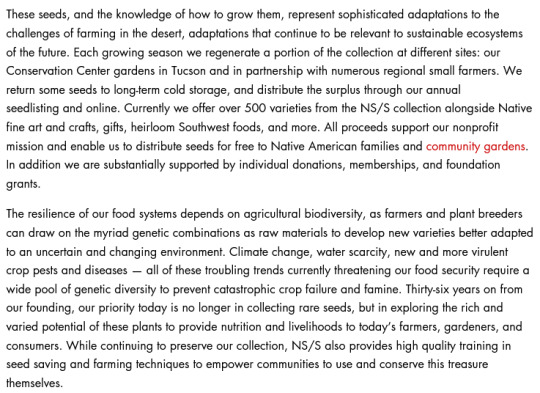
so anyways this is the coolest website ever. you can find the wild relatives of chiles on here called chiltepines, you can find different colors of corn and cool squash's, and every seed from whichever farm has it's own lil origin story written about it. you can also find other veggies here that are already commercially available to help fund and support this organization. as well as there being a cool gift shop with a lot of art made by different native folk from all around as well as cookbooks, jewelry, pottery, weavings, and clearly plenty more:

as well as a pantry?? with premade soup mixes??? and i really want to try them now??????

anyways I think its worth snoopin' around bc I'm almost positive you'll see something you think is cool (oh also if you happen to have some seeds passed down from ur family too and ur also native they seem like they would gladly help produce more)
#heirloom seeds#native plants#native wildflowers#native seeds#native seeds search#gardening#farming#seed conservation#heirloom vegetables#vegetables#crops#food#native american#native american traditions#native american heirloom seeds#support indigenous people#indigenous art
4K notes
·
View notes
Text












Native Knowledge
Medicine Generations: Natural Native American Medicines Traditional to the Stockbridge-Munsee Band of Mohicans Indian Tribe, published in 2013, is part of our Native American Literature Collection. Misty Cook (Davids), M. S., of the Stockbridge-Munsee Community, wrote the book and is also credited with the photography.
The Stockbridge-Munsee Community, a band of the Mohican Indian Tribe, has a profound cultural heritage that has always placed a strong emphasis on traditional medicine. For generations, the knowledge of plant medicine has been passed down as an oral tradition that traces its roots back to the native lands of both Mohican and Munsee ancestors. Jeanette "Granny" Gardner, Cook's ancestor, is responsible for keeping much of this knowledge alive.
This knowledge comes together in her book, which contains 58 Native American herbal medicines. It serves as a guide to learning about and how to use the Medicines, and it also includes the history of the Medicines as passed down through her family's lineage of Wolf Clan Medicine people. At its core, this book is a testament to the resilience and wisdom of the Stockbridge-Munsee Community. It stands as a vital document, preserving and sharing the invaluable knowledge of traditional Native American medicinal practices for future generations in the community and beyond.
View other posts from our Native American Literature Collection.
-Melissa (Stockbridge-Munsee), Special Collections Graduate Intern
#native americans#native american women#stockbride-munsee#mohican#munsee#native plants#medicine#misty cook#medicine generations#Jeanette “Granny” Gardner#traditional medicine#indigenous#native american traditions#mohican indian tribe#plant medicine#oral traditions#herbal medicines#ancestors#native american literature collection
91 notes
·
View notes
Text
Black Rock City: The Burning Man 2023 1.2
Black Rock City. A cidade mais incomum da Terra – As viagens de Antônio. 22 de jun. de 2022 Neste vídeo, Antônio mostra sua viagem ao deserto de Nevada, EUA, e mais especificamente ao evento, Black Rock City, também conhecido como Burning Man. Este foi um evento gratuito que aconteceu em 2019 e é realizado todos os anos. Não só a entrada é gratuita, como as comidas e bebidas também são…

View On WordPress
#Adanko of the Akan people#animalia#Black Rock City. A cidade mais incomum da Terra. As viagens de Antônio#Black Rock City: The Burning Man 2023 1.2#Burning Man’s annual Honoraria art grant program#como as comidas e bebidas também são gratuitas#conceito de luxo#entrada é gratuita#Existe Guarani em São Paulo#fusca gigante#Native American traditions#Neanderthal ancestors#the ancients of the Mediterranean region#the animal-headed gods of ancient Egypt to the Aztecs’ Tezcatlipoca#the form of a jaguar#the hero Bre’r Rabbit#the Labyrinth of the Minotaur of Crete to the Isle of Doctor Moreau#the trickster Coyote#Virtual Burn offered opportunities for interactivity and participation showcasing the boundless creativity of the global Burning Man communi
3 notes
·
View notes
Text


Today's compilation:
Feast on Tucson 2001 Folk / Roots / Traditional Folk / Western Swing / Native American Traditions / Gospel / Mariachi
One of the most remarkable things about being part of a multi-ethnic community is not just having the opportunity to experience a wide range of different cultures other than your own, but to have those cultures commingle with one another too, which is what this 2001 benefit showcase of Tucson, Arizona, and the American southwest more broadly, has going for it. In no other section of the world are you gonna get a mixture of things like cowboy folk, western swing, Mexican folk and mariachi, gospel, and Native American traditions all in the same place, and sometimes some of the artists on here find intriguing and unique ways to blend a couple or few of these different styles together, reflecting the fluid and rich melting pot nature of their own surroundings and upbringings.
But these ideas, while definitely yielding the most interesting parts of this album, don't always make for the best tunes overall, and along with an atrocious piece of janky-keyboard gospel with a laughably bad lead vocal, and my belief that the accordion produces one of the lamest sounds that any musical instrument could ever possibly make, a bunch of this album really isn't my cup of tea. But a song like the Ismael Barajas Trio's "Alysia," which utilizes a midtempo dance beat with different hand drum rhythms panned separately through the left and right channels to complement Barajas' own impressive and freely wandering guitar playing, is one that's sure not to be missed; a nicely lush piece of music there.
And apparently another band on here, Mariachi Cobre, who are originally from Tucson, have also been holding down a residency at Walt Disney World's EPCOT Center since the year it opened in 1982 too. Naturally, you can find them playing at the Mexican pavilion in the park's World Showcase neighborhood, and here they provide "Guadalajara" off of their self-titled 1992 debut album.
So, overall, I think it's worth listening to this neat snapshot of Tucson and the southwest in order to hear some pretty unique approaches to combining sounds from coexisting cultures, but the better executions seem to come courtesy of the veteran acts who appear to be more or less content with sticking closer to one thing; but so do the worst executions too 😅.
All proceeds appear to have gone to a worthy cause in order to fight poverty and hunger, though, so regardless of the product itself, it was probably money well spent to purchase this one anyway.
And always remember, C before S!
Highlights:
Ismael Barajas Trio - "Alysia" Mariachi Cobre - "Guadalajara"
#folk#folk music#roots#roots music#traditional folk#western swing#swing#swing music#native american traditions#native american music#traditional native american music#gospel#mariachi#music#90s#90s music#90's#90's music#2000s#2000s music#2000's#2000's music#00s#00s music#00's#00's music#tucson#arizona#southwest#southwestern
0 notes
Text
Sacred Plants and Their Powers in Apache Traditions
Image generated by the author
As the first light of dawn kisses the rugged landscape of the Southwest, the air is filled with the earthy fragrance of sagebrush and cedar. For the Apache people, this scent isn’t just a reminder of nature’s beauty; it’s a bridge to their spiritual world, a connection to generations of wisdom. What if I told you that these sacred plants do more than just enhance the aroma of the desert? They embody the very essence of Apache spirituality, healing, and resilience.
The Heartbeat of Apache Culture
In Apache tradition, sacred plants are not mere resources; they are revered allies that weave a tapestry of life, spirituality, and health. Imagine standing in a sunlit clearing, surrounded by towering juniper trees and sprawling sagebrush. Each plant resonates with unique energies, offering insights into the mysteries of existence. The Apache view these plants as living entities, each possessing a spirit that contributes to the balance of the universe.
Cedar, for example, is more than a tree; it is a symbol of purification. When the smoke of burning cedar wafts through the air, it carries with it the hopes and prayers of the Apache people, cleansing the spirit and inviting clarity. Sage, with its silvery leaves, is known for its ability to ward off negative energies, enveloping the space in a protective embrace. Tobacco acts as a communicator between humans and the spirit world, a sacred offering that establishes a dialogue with the divine.
A Journey Through Time
To understand the significance of these sacred plants, one must delve into the rich history of the Apache people. These traditions, rooted deeply in the land, have persisted through centuries of challenges, including displacement and conflict. The Apache have always viewed the natural world as a living entity, intertwined with their existence.
Elders, the keepers of this knowledge, pass down teachings about the sacred flora to the youth, fostering a deep respect for the earth. The wisdom of the elders is like a river, flowing through the generations, teaching the lessons of patience, growth, and the interconnectedness of life.
The Symbolism of Sacred Flora
Sacred plants symbolize sustenance, resilience, and community. Each gathering of these plants transforms into a sacred practice, a ritual that deepens the bond between the Apache and their environment. When the Apache go out to gather plants, they do not see it as a simple task; it’s a spiritual journey that emphasizes gratitude and respect for nature.
The Apache proverb, “From the seed, the plant grows; from the struggle, wisdom blooms,” encapsulates this philosophy beautifully. It speaks to the idea that life’s challenges can yield profound insights, much like a seed that must push through the soil to reach the sun. The act of gathering plants becomes a metaphor for life itself, teaching patience, resilience, and the importance of nurturing one’s roots.
The Tales of Nahasdzáá
One of the most poignant stories in Apache tradition is that of Nahasdzáá, a young man on a quest for understanding. Threatened by external forces that jeopardized his tribe, Nahasdzáá embarked on a journey to uncover the secrets of sacred plants. Guided by the wisdom of his mentor, he traversed the desert, learning about the juniper tree, tobacco, and desert sage along the way.
Through his journey, Nahasdzáá discovered that true strength lies not in dominance but in harmony with nature. Each plant he encountered taught him valuable lessons—resilience from the juniper, connection from tobacco, and purification from desert sage. This tale serves as a reminder that the answers we seek are often found in our relationship with the natural world.
The Spiritual Significance of Plants
The spiritual significance of plants like sweet grass, tobacco, white sage, and cedar cannot be overstated. Sweet grass is used in ceremonies for its cleansing properties, symbolizing the purification of the spirit. Tobacco, a sacred offering, serves as a conduit to the spiritual realm, connecting the physical and metaphysical worlds. White sage is employed for purification, while cedar is revered for its protective and healing properties.
Experts like Dr. Althea McGowan and Chief Apache John D. Dorsey emphasize that these plants are not just tools—they are integral to Apache spirituality, guiding individuals on their paths of healing and transformation. The knowledge surrounding these plants is a living legacy, passed down through generations, ensuring the survival of Apache culture.
Integrating Sacred Plants Into Daily Life
In Apache traditions, the integration of sacred plants into daily life is essential for maintaining physical and emotional well-being. Imagine a community gathering where sage and sweet grass are lit in a ceremonial smudge. The smoke dances in the air, carrying prayers and intentions upward, fostering a sense of unity and belonging among the participants.
Herbalists within the Apache community often utilize plants like turmeric and yucca to treat ailments, blending ancient wisdom with modern healing practices. These rituals reinforce community bonds, emphasizing the importance of connection not only to nature but also to one another.
The Contemporary Relevance of Apache Teachings
In today’s fast-paced world, the teachings surrounding sacred plants resonate deeply as individuals seek connection with nature and spiritual grounding. The practice of smudging with sage has gained popularity, promoting mindfulness and community bonding. In an era marked by stress and disconnection, these ancient practices offer a pathway back to serenity.
The rising interest in indigenous knowledge highlights the importance of environmental stewardship and sustainability, echoing the teachings of the Apache. As we face pressing global challenges, the wisdom of the Apache people serves as a guiding light, reminding us of our responsibility to honor and protect the natural world.
Conclusion: Embracing the Wisdom of Sacred Plants
As we reflect on the profound connection between the Apache people and their sacred plants, we are reminded of the importance of honoring these ancient traditions. These plants serve as essential allies in healing and spirituality, embodying deep wisdom that can guide us on our personal journeys.
The stories, rituals, and teachings surrounding sacred plants invite us to explore our connections to nature, fostering well-being and a deeper understanding of life’s interconnectedness.
So, as you breathe in the forest air or walk through a sun-soaked meadow, consider the stories the plants have to tell. What wisdom lies within each leaf, each petal? Perhaps, like the Apache, we can find strength in harmony with the natural world, allowing its gifts to enrich our lives.
In a world that often feels fragmented, let us return to the roots of our existence, embracing the sacredness of the earth and the teachings of those who have walked this path long before us. As we honor these connections, we may discover that the journey toward healing and understanding begins right outside our door.
By weaving these elements together, we honor the Apache traditions and the sacred plants that hold the key to their spirituality and resilience. It’s a call to action, inviting us all to reconnect with nature and embrace the wisdom it offers.
AI Disclosure: AI was used for content ideation, spelling and grammar checks, and some modification of this article.
About Black Hawk Visions: We preserve and share timeless Apache wisdom through digital media. Explore nature connection, survival skills, and inner growth at Black Hawk Visions.
1 note
·
View note
Text
Understanding ICWA in Foster Care and Adoption
Understanding ICWA in Foster Care and Adoption. In the realm of child welfare and adoption, the Indian Child Welfare Act (ICWA) plays a pivotal role with profound implications. Enacted in 1978, the ICWA strategically addresses the distressing issue of Native American children enduring unwarranted separations from their families and tribes, owing to the cultural insensitivity inherent in…
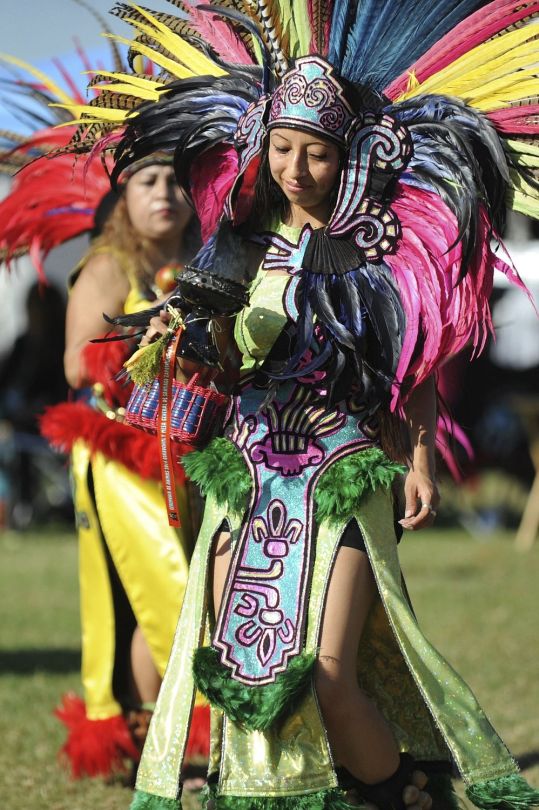
View On WordPress
#Active engagement in cultural heritage#Balancing cultural roots#Child welfare and adoption#Community-driven decision-making#Cultural heritage preservation#Empowering tribal authorities#ICWA cultural heritage protection#Indian Child Welfare Act (ICWA)#Language preservation in Native communities#Measurable success of ICWA#Native American communities#Native American cultural identity#Native American traditions
0 notes
Text

xx
#native american#native girls#nativebaddiez#tribal tattoo#tribal art#face tattoos#face tattoo#inked#inkspiration#tattoos#tattoed babe#inked girls#tattooed#tattoos for girls#traditional tattoo#chin tattoo#septum ring
238 notes
·
View notes
Text

Ishi was the last known member of the Yahi, a subgroup of the Yana people in California. Yahi customs forbade individuals from speaking their own name without another Yahi’s introduction, so Ishi stated he had no name. Anthropologists named him "Ishi," meaning "man," as his real name was never revealed.
#Ishi#Yahi#Native American#culture#naming#traditions#anthropology#history#California#customs#man#tribe
172 notes
·
View notes
Text
Put more effort than intended
Have a Hatsune Miku in a jingle dress. Of Ojibwe origin, so shout out to dem they cool as hell(Im Cree ily Ojibwe cousins)

278 notes
·
View notes
Video
youtube
#videos#fave#crime pays but botany doesn't#nature conservation#species conservation#seed conservation#native american traditions#peyote#idk how else to tag this#uhhh
1 note
·
View note
Text

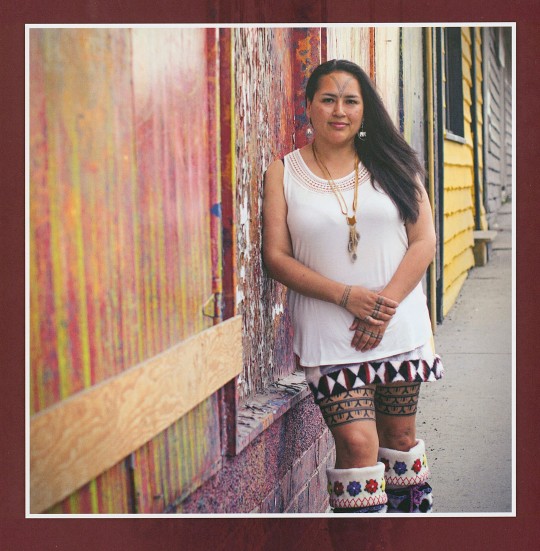
The author, Angela Hovak Johnston.

Johnston and Marjorie Tungwenuk Tahbone, traditional tattoo artist.

Catherine Niptanatiak: "I designed my own, something that represents me and who I am, something that I would be proud to wear and show off, and something that would make me feel confident and beautiful. . . . I have daughters and I would like to teach them what I know. I would like for them to want to practice our traditions and keep our culture alive."

Cecile Nelvana Lyall: "On my hand tattoos, from the top down, the triangles represent the mountains. . . . The Ys are the tools used in seal hunting. . . . The dots are my ancestors. . . . I am so excited to be able to truly call myself and Inuk woman."

Colleen Nivingalok: "The tattoos on my face represent my family and me. The lines on my chin are my four children -- my two older boys on the outside protecting my daughters. The lines on my cheeks represent the two boys and the two girls on either side. The one on my forehead represents their father and me. Together, we live for our children."
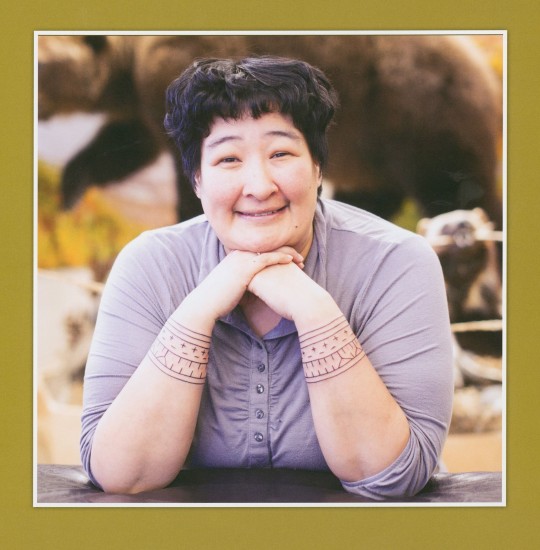
Doreen Ayalikyoak Evyagotailak: "I have thought about getting traditional tattoos since I was a teenager. . . . When I asked the elders if I could have my own meaning for my tattoos, they said it wouldn't matter. My tattoos symbolize my kids."
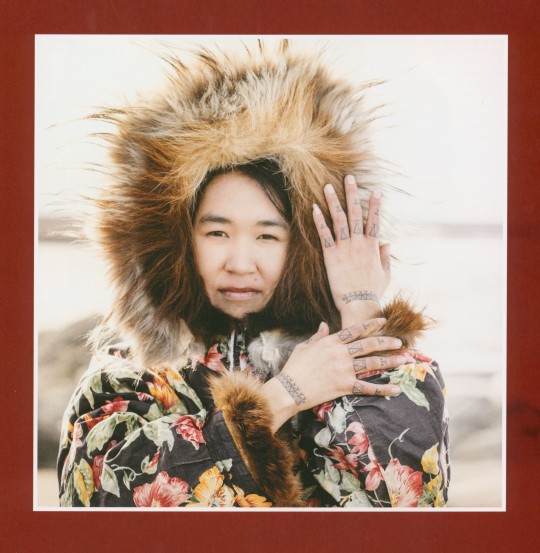
Mary Angele Takletok: "I always wanted traditional tattoos like the women in the old days. I wanted them on my wrists and my fingers so I could show I'm Inuk."

Melissa MacDonald Hinanik: "As a part of celebrating my heritage and revitalizing important traditional customs that form my identity, I believe I have earned my tattoos. I am a beautiful, strong young woman. I am a mother, a wife, a daughter, a friend, and an active community member. I reclaim the traditional customs as mine, I re-own them as a part of who I am."
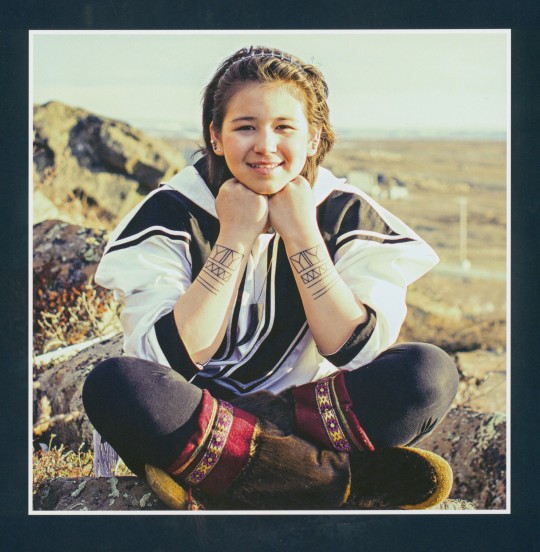
Star Westwood: "We still have some of our culture, but some things are slowly dying. Having tattoos helps us keep our culture alive. . . . . My tattoos represent my dad and my dad's dad. The ones closest to my wrists represent my sisters."
------------------------------------------------------------------------------
National Tattoo Day
July 17 is National Tattoo Day. To celebrate, we present some images from Reawakening Our Ancestors' Lines: Revitalizing Inuit Traditional Tattooing, compiled by Angela Hovak Johnston, co-founder with Marjorie Tahbone of the Inuit Tattoo Revitalization Project, with photographs by Inuit photographer Cora DeVos, and published in Iqaluit, Nunavut by Inhabit Media Inc. in 2017.
For thousands of years, Inuit have practiced the traditional art of tattooing. Created the ancient way, with bone needles and caribou sinew soaked in seal oil, sod, or soot, these tattoos were an important tradition for many Inuit women, symbols etched on their skin that connected them to their families and communities. But with the rise of missionaries and residential schools in the North, the tradition of tattooing was almost lost. In 2005, when Angela Hovak Johnston heard that the last Inuk woman tattooed in the old way had died, she set out to tattoo herself in tribute to this ancient custom and learn how to tattoo others. What was at first a personal quest became a project to bring the art of traditional tattooing back to Inuit women across Nunavut.
Collected in this book are photos and stories from more than two dozen women who participated in Johnston's project. Together, these women have united to bring to life an ancient tradition, reawakening their ancestors' lines and sharing this knowledge with future generations. Hovak Johnston writes: "Never again will these Inuit traditions be close to extinction, or only a part of history you read about in books. This is my mission."
Reawakening Our Ancestors' Lines forms part of our Indigenous America Literature Collection.

Angela Hovak Johnston (right) with her cousin Janelle Angulalik and her aunt Millie Navalik Angulalik.
View other posts from our Indigenous America Literature Collection.
#National Tattoo Day#tattoos#holidays#Inuit traditional tattoos#Inuit tattoos#Inuit#Inuk#Reawakening Our Ancestors' Lines#Angela Hovak Johnston#Cora DeVos#Cora Kavyaktok#Marjorie Tahbone#Inuit Tattoo Revitalization Project#Inhabit Media Inc.#photographs#Inuit women#Indigenous America Literature Collection#Native American Literature Collection
3K notes
·
View notes
Text

"Josephte Ourné," a chief’s daughter by Joseph Légaré, c. 1840 Canada
#mdp19th c.#19th century#native American#the americas#joseph legare#canada#traditional dress#tribal#mdpamerica#1840s
118 notes
·
View notes
Text

David is little spoon whether he likes it or not (he moved in his sleep and Angel was determined to stay attached)
#redacted audio#redacted asmr#redactedverse#redacted fanart#redacted david#redacted angel#“native american woof blanket moon aurora borealis wolf howling star traditional blanket” absolutely DOMINATES every indigenous household#David originally refused it's power but eventually gave in#they all do#either way I love my eepers#look at em#so tired#I just know that's the best sleep of their lives#they'll wake up and wonder what millennia they're in#Ang-go Bongo
601 notes
·
View notes
Text
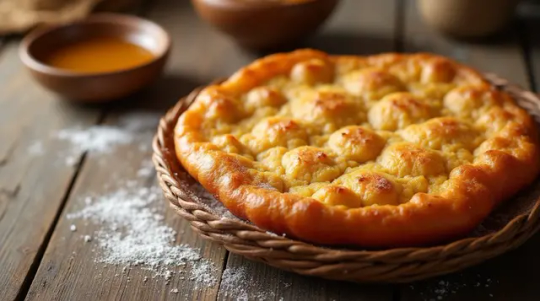

How to Make Fry Bread – A Traditional Recipe 🍞🔥
54 notes
·
View notes
Text

Pawnee woman, 1868.
51 notes
·
View notes
Text

This fan art was inspired by @maplewozapi who's art I absolutely ADORE!! Especially her MLP indigenous au pieces. Indigenous culture and My Little Pony are two of my special interests so it's awesome to see them together.
This is based on her Princess Celestia design, and I thought it would be fun to make it in the G2/G3 art style. I think it turned out super cute looking! I think I'll try drawing her Princess Luna next🌙💙
#artists on tumblr#colored pencil#cartoon#my little pony#princess celestia#celestia#character design#indigenous art#cool art#cute art#small artist#mlp art#mlp fim#mlp au#mlp redesign#mlp fanart#mlp#mlp fandom#mlp celestia#traditional drawing#traditional illustration#traditional art#mlp g3#mlp g2#mlp gen 3#mlp gen 2#native american#my art
55 notes
·
View notes